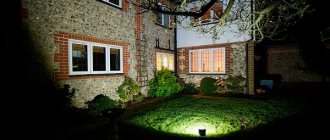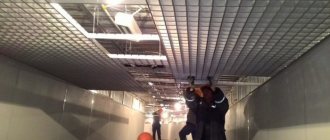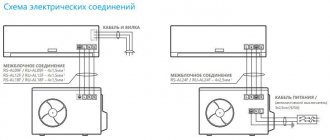- trench excavation and cable laying
- installation of mortgages and lighting fixtures
- assembling the circuit and connecting lighting automation
In this case, the connection itself can be performed in manual mode, when everything starts and turns off manually through one single switch, or automatically from light sensors.
But it is best to use a more universal option with the implementation of both methods in one panel room. Let's look at it in more detail.
Planning
Before you begin work on organizing street lighting, you need to draw up a detailed plan. You can carry out planning activities in one of three ways, whichever seems most convenient:
- Make several copies of the registration certificate. This can be done using a printer. Place the planned objects on the received copies. Draw up a drawing showing the lighting system diagram.
- If there is no technical passport, draw the plan on the drawing sheet. To do this, create a situational diagram. This paper is convenient due to the presence of cells, so there should be no problems with scaling the area. It is recommended to stick to a scale of 1 to 100, which corresponds to one centimeter for every meter of land.
- The plan can be drawn using a computer program. Any application for organizing landscape design will do. You can also choose a special program for lighting calculations.
The main purpose of planning is to determine the location of system elements. The plan should show a diagram of the electrical circuit with all the lights, sensors, switches, and wiring. You should also take into account the costs of purchasing materials and tools. The plan does not have to contain absolutely accurate—down to the millimeter—calculations. The main thing is a clear concept that gives a clear idea of what and how to do.
The plan must also contain a list of work to be performed:
- Calculation of material consumption.
- Selection of lighting fixtures and method of their installation.
- Determining the method of laying electrical wiring.
- Preparing the workspace.
- Laying wires.
- Installation of supporting structures.
- Connecting street lighting.
- Installation of monitoring and regulating devices.
Cable routing
Even at the planning stage, you need to choose a method for laying cables. Wires are pulled from the electrical panel in one of three ways:
- Underground cable. This option is used most often, since in this case the wires will be invisible and will not spoil the appearance of the area. The underground method of laying cables is the safest, since no one will damage it with careless movement.
- Overhead cable. The most financially accessible method, as well as convenient in terms of low labor costs. However, it is used only when it is not possible to lay the cable underground, due to the obvious disadvantages of its open location. They try to hide the wires under the roof or hang them on supports (poles). To reduce the number of supports, lightweight cables with a plastic or galvanized sheath are used.
- Terrestrial cable. Used as a temporary option. Ground wiring is used, for example, to organize the lighting of a street Christmas tree. The cables are simply laid out on the ground.
Electrical wiring calculation
At this stage, the number of lamps, their type, power, length and cross-section of wires, power of automatic switches, as well as residual current devices are established. Taking into account the fact that lamps are marked in watts, and electricity meters and fuses in amperes, to select suitable machines you will have to recalculate these parameters. To calculate electrical wiring, a simple formula is used.
Note! If you plan to install LED lamps, you will need a low-voltage cable. A step-down transformer should also be provided at the main electrical panel.
Creating an electrical diagram
For clarity, we can give the following example. In the area in front of the house, it is necessary to organize lighting for the porch and the area near the gate. Lay two wiring lines. On the first there is a lamp and switch O and “B1”. On the second line (coming from the gate), the lamp (“L2”) is connected to the switch (“B2”) near the front door. Also on the second wiring line near the gate there is a motion sensor (“D”).
Electrical equipment for outdoor lighting must meet all safety requirements. When organizing wiring, the following circumstances should be taken into account:
- Cables are laid underground at a certain depth - no closer than 70 cm from the surface. The cable should not be too close to the building - at least 60 cm. If there is a pipeline nearby, the distance between it and the cable should not be less than 50 cm. The distance between parallel laid cables is from 30 cm.
- Overhead wiring is located at least three meters from ground level.
- Lamps should be installed so that they do not blind neighbors.
- Only copper wires meet modern requirements.
- Cables laid in walls must be placed in corrugated channels made of non-flammable plastic.
- Switches are located in dry places not exposed to direct water.
- All luminaires must be grounded.
Selection of lamps
When choosing lamps for lighting for a dacha, it is necessary to take into account not only the aesthetic purpose, but also the functional one.
It is also important to buy devices that provide enough light but consume a minimum amount of electrical energy
It is not advisable to stick to traditional incandescent lamps because they overheat, require a lot of electricity and quickly break down. At the same time, under the influence of negative temperatures, these devices can explode.
Alternatively you can use:
- Fluorescent and halogen devices. They represent a modern solution with economical energy consumption and a long service life.
- LED lightening. Such lamps differ from traditional analogues in their lack of vulnerability to heat, extended service life and increased brightness. By installing LED devices, you can manually change the lighting intensity, as well as beautifully decorate various landscape elements.
- Fiber optic luminaires. They are a kind of “know-how” in the world of lighting systems. The scope of their application is quite wide: main or additional light, architectural lighting, decoration of garden ponds, alpine slides and other landscape design items. The system works based on a simple projector (it is a light source for optical fiber), a cable and threaded attachments. Using one generator, you can provide light to a large area.
The advantages of fiber optic lighting include ease of installation and management, long service life and economical electricity consumption.
Today, stylish solutions in the form of paving or fluorescent tiles with LEDs are becoming popular. Some devices are capable of storing solar energy during the day and then releasing it at night.
Necessary materials
To organize street lighting you will need a set of materials:
- Wires. For outdoor conditions, cables with a double layer of insulation will be needed. All their cores have a polyvinyl chloride coating, as well as a general protective layer. Copper conductors are used since they do not lose their qualities when bent. At the same time, the cost of copper wiring is significantly higher compared to aluminum. If the cables will be laid overhead, they will need tension to support them. To do this, a stainless steel coated wire with a diameter of 4-5 mm is pulled between the supports. The power cable is connected to it with small pieces of copper wire. If it is laid underground or along the walls of a building, it is placed in a metal-plastic box.
- Lamps. For outdoor lighting, you need to choose a closed type lamp with a sealed housing. The base of the device must be made of ceramic. Outdoor indoor lights are unsafe and will not last long.
- Lamps.
- Circuit breakers. The street lighting system must be equipped with an automatic circuit breaker so that in the event of a short circuit the entire building will not be de-energized. The system must not be connected to a regular outlet. A machine is required on the electrical panel.
- Switch boxes. The wires are connected to them. Steel boxes are used to install the lamp. Such designs can be purchased at an electrical supply store.
Advice! It is better to purchase the above materials from one seller, since in this case it is easier to get a good discount.
Selection of luminaires and lamps
Separately, it is worth mentioning the choice of suitable lamps and light bulbs. The most popular types of lamp designs include:
- wall;
- on poles or other vertical supporting structures;
- hanging;
- on legs;
- spotlights;
- diode strips.
Any type of lamp is suitable for street lighting, but they all have the following features:
- Incandescent lamps. Currently considered obsolete due to wasteful energy consumption, tendency to overheat and fragility. Typically, such lamps are used only as a temporary option.
- Halogen lamps. In fact, they are a type, albeit more advanced, of incandescent lamps. They occur most often. They are distinguished by efficiency, durability, and high-quality luminous flux. The disadvantages of halogen lamps include noise and toxic fumes inside the device. However, in street conditions these shortcomings are not critical.
- Mercury lamps. These include almost all Soviet-style street lamps. Control is carried out using a starting device. The connection speed of a mercury lamp is related to the ambient temperature. In cold weather, the lamp lights up noticeably longer. Mercury lamps are unstable to voltage surges, as a result of which they often fail. The lamps are prone to overheating, which is compensated by the presence of special heat-resistant wires. Mercury lamps are designed to illuminate large areas.
- Metal halide lamps. They contain mercury, inert gas, and halogens. Due to the heating of solids, a gas is formed that produces radiation. The power of a metal halide lamp depends on the number of bases used. Such lamps are characterized by energy efficiency, high luminous efficiency, and high-quality color reproduction. Disadvantages include high cost and lengthy startup process.
- Fluorescent lamps. They are the most progressive light source to date. The advantages of such lamps include efficiency, long service life, lack of overheating and flickering, and high-quality light. Disadvantages include high cost and gradual decrease in brightness.
When purchasing an outdoor lamp, you should pay attention to the following characteristics:
- Level of protection from external influences. Each lamp is marked with the letters IP and a numerical code (two digits). A street lamp must have a degree of protection of at least IP65. Lamps with IP68 code are an even better option; they can be placed under water without losing their performance.
- The material from which the lamp body is made. In outdoor conditions, the best option is a metal case (aluminum). Plastic structures are not suitable for outdoor use.
- Deflector shape. Round luminaires are ideal when you need clearly focused light in a small area. Square fixtures illuminate large areas, while tubular fixtures are used to illuminate modest areas.
Sensors
You can save energy by optimizing the operation of the lighting system by installing motion sensors. These devices turn on the light when it detects a moving object within a certain radius and turn off the light when the object moves away.
There are other types of sensors, for example, those that respond to light levels. As soon as it gets too dark outside, the light automatically turns on. And, conversely, with the onset of morning it turns off.
All outdoor sensors are protected from moisture and dust. Such devices are used both in winter and summer.
No. 6. Main types of lamps for the site
It is desirable that the illumination of the area is not only a stylish and functional addition, but also does not lead to exorbitant costs for the use of electricity. Traditional incandescent lamps are far from the most economical option; they get very hot during operation, which consumes most of the energy, quickly burn out, and can even explode at low temperatures. There are a lot of alternatives to incandescent lamps today:
- fluorescent and halogen lamps, which are more economical and durable;
- LED lamps and strips do not heat up, consume minimal energy, shine quite brightly, and in terms of durability they confidently outperform competitors. Moreover, when using this type of lamps, it will be possible to easily change the brightness of the lighting. Typically, LEDs are used to create decorative lighting, arranging hidden lighting for ponds, steps, benches, the facade of a house, or hiding them in the crown of trees or shrubs;
- fiber optic systems are a new word in the field of garden lighting. They can be used as sources of main or additional light, for architectural lighting and even for decorating pools and ponds. Such a system consists of a projector (light source for the optical fiber), an optical cable or fiber, a common input, threaded attachments and various terminal devices. It turns out that with just one generator it is possible to provide lighting to a large area. The main advantages of the system are ease of operation, durability, cost-effectiveness and the absence of requirements for waterproofing of lamps.
We should also highlight such interesting modern solutions for garden lighting as paving slabs with LEDs built into them and fluorescent tiles with the ability to accumulate solar energy during the daytime.
Installation of a street lighting system
Installation of the luminaire on a support is carried out by performing several sequential operations. Before starting electrical installation work, you should disconnect all devices from the electrical network so that the installation process is safe.
Preparatory work
- We remove all debris from the support installation area.
- We buy all the necessary materials.
- We are preparing tools for electrical installation work.
- We dig a trench for laying wires.
In the process of installing street lighting, you will need the following tools and materials:
- brace;
- trough for mixing the solution;
- bayonet shovel;
- Master OK;
- sand;
- cement;
- water;
- materials for formwork (boards, bars or plywood).
Installation of supports for lamps
Installation work is carried out in one of several possible ways. The choice of a specific installation method depends on the type of retainer.
Fixing the lamp on the wall:
- We mark the installation area of the lighting fixture.
- We check the evenness of the support using a building level.
- We make holes in the walls with a drill.
- We hammer in anchors or dowels.
- We fix the brackets in the wall.
Attaching the lamp to a pole installed on the ground:
- We dig a hole of the required diameter.
- Pour sand into the bottom of the hole and tamp it down.
- We assemble wooden formwork.
- We lay a plastic pipe of the required cross-section between the slats. Then we run the cable inside it.
- We seal the pipe ends. This is necessary so that the pipe becomes sealed and the construction mixture does not get inside in the future.
- We prepare concrete and fill the formwork with it.
- We place an anchor in the center to secure the support under the lamp. The anchor must be strictly vertical, so we use a building level.
- We wait until the solution hardens.
- We install poles on all anchors.
Installation of the lamp
Installation of a street lamp is carried out as follows:
- We stretch the cables from the distributor to the area where we install the lamp.
- We lay the cable in a trench or prepared hidden cavities.
- We install the lamp in place.
- We clean the ends of all lead wires with a knife.
- We fix each phase wire to the central contacts of the lamp.
- We wrap the twisted areas with electrical tape or heat shrink tubing.
- We make sure the integrity of the insulating layer, check the resistance and grounding with a multitester. If no problems are identified, tighten the nuts so that the lamp is securely held in place.
Why do you need electrical wiring, sockets and lighting in your summer cottage?
And really, why? After all, any problem can be solved with an extension cable of 10 meters, or at most 20. However, let me ask: are you absolutely sure that you want to see your site in the web of extension cord wires? What if there are several lamps or electrical equipment on the site and they are all scattered throughout the territory?
Of course, budget solutions are good if we are setting up a country house, which we visit from time to time. But if we are talking about a full-fledged private house in which you plan to live permanently, it is better to do everything “wisely”: your plot, your garden, your lawn should look beautiful and neat. And it would be barbaric to hide all this beauty with a web of wires.
What to do? Fortunately, there is a solution to this problem. True, you will need to spend a little money and time, but you will forever get rid of a bunch of wires in your garden. We are talking about installing hidden electrical wiring around your site.
Connection to electrical panel
How to connect a lamp to an electrical panel is described in the Electrical Installation Rules. The PUE, in particular, states that the device body must be self-extinguishing, that is, made of metal coated with heat-resistant material or heat-resistant plastic. The installation location must meet the following requirements:
- fire safety;
- natural light;
- the presence of artificial ventilation or natural ventilation;
- location in a free access area.
The electrical panel contains the following elements:
- electric meter;
- residual current device;
- bus zero;
- grounding bus;
- introductory automatic machines (30-60 A);
- socket outlets for high-current electrical appliances (25 A);
- socket outlets for low-current electrical household devices (16 A);
- automatic devices for lamps (10 A).
When all the circuit elements are in place, the connections are tested. Zero resistance with phase is also measured.
The luminaire is connected to the electrical panel after turning off the general voltage in the metering panel. Next, we bring all the wires to the correct places. Due to the responsibility of the task, it is better to entrust this work to a professional electrician.
Advice! After connection, it is recommended to sign all machines. The task is made easier by the presence of special niches in each of them.
The lamp can be connected directly or through a dedicated outlet. In the latter case, to de-energize the network, it will be enough to remove the plug from the socket.
What to rely on in theory
Everything related to the creation of lighting, especially the street plan, is spelled out in the appropriate documentation. These include:
- SNiP, which stands for “building codes and regulations”. This documentation provides standards for the level of illumination, as well as the requirements for organizing external and internal lighting;
- SanPin. This abbreviation stands for “sanitary norms and rules”. This document serves as a supplement to SNiP and comes to the fore only when it concerns public premises, especially educational ones;
- GOST These documents list all the requirements that lighting and other devices used in certain situations must meet.
Laying cables in the ground to create street lighting is a labor-intensive process that ultimately must:
- provide high-quality power to outdoor lighting fixtures;
- create conditions for the safe movement of people along the ground in which the cable is laid;
- prevent moisture from penetrating inside the electrical component of the wiring. This situation carries the risk of a short circuit, which can lead to a fire.
In addition, it should be remembered that violation of the technology for laying cables for outdoor lighting in the ground can lead to electric shock to a person. Therefore, in order to avoid negative consequences for yourself and others, these installation works should be carried out only after detailed familiarization with all special documentation. Below are the requirements, standards and work procedures specified in this documentation. Everything necessary for the work can be found in the relevant sections and subsections. Here we will consider the main and most important aspects of laying for understanding.
Safety regulations
To ensure a secure system, it is recommended to adhere to the following rules:
- It is advisable to avoid low-quality Chinese products; they can be unsafe and almost always short-lived.
- Use a voltage stabilizer, it makes the system safer.
- Install lamps intended for outdoor conditions.
- Use reliable insulation.
- For outdoor use, supports and brackets with anti-corrosion coating should be installed.
- Underground wiring is located at the appropriate distance (according to the rules of the Electrical Code) from other objects.
- The cable must be accompanied throughout its entire length by a support cable.
All work can be done with your own hands if you follow safety precautions and installation instructions. In the absence of at least basic knowledge of electrical engineering and experience, it is better to entrust the work to an electrician.
Rules for laying power supplies in the ground
The laying of power supply lines in the ground is carried out in accordance with a number of rules:
- laying depth - 0.4-0.7 m;
- the trench should not be located at a distance of less than 0.6 m from the foundation;
- there should be a layer of sand on top and bottom of the gasket;
- Cables in the same trench can be spread at least 0.1 m apart. This should be taken into account when determining the width of the trench;
- There should be no trees near the installation. The minimum distance to them should be 2 m;
- distance from underground utilities - 2 m;
- the distance between intersecting cables is at least 0.5 m;
- connection between cables occurs only using special couplings.
All these requirements are specified in GOST and the relevant sections of SNiP. For each individual situation, this documentation contains its own requirements and standards, which are determined by the specifics of certain types of electrical installation work.
Do you need automation?
Automatic control of outdoor lighting is gradually replacing traditional switches due to its convenience and reduced energy consumption. Installing outdoor lighting, supplemented with motion and light sensors, allows you not to worry about turning on/off the lamps in a timely manner. After all, a common reason for excessive consumption of electricity is simple forgetfulness - the light remains on all day long. For example, there is no point in leaving security lighting on all night if the sensor triggers a floodlight in the area where motion is detected. Installing an electronic module with a timer provides many possibilities. You can program the operating schedule of either one or an entire group of lighting fixtures. Of course, you will need to purchase not only sensors, a timer and a photo relay, but also additional devices such as a controller unit and a control panel.
The complex “Smart Home” system has maximum functionality, which allows you to automate, including street lighting. You can use both system devices and a smartphone to configure functions and send commands. Moreover, access to the system is not limited by distance. It is enough to log into your home Ethernet network via the channel provided by your mobile operator.











